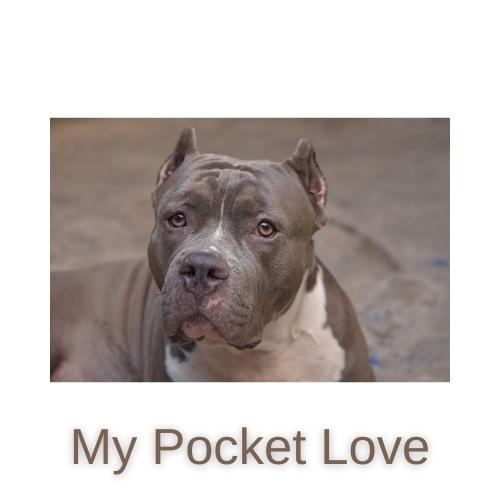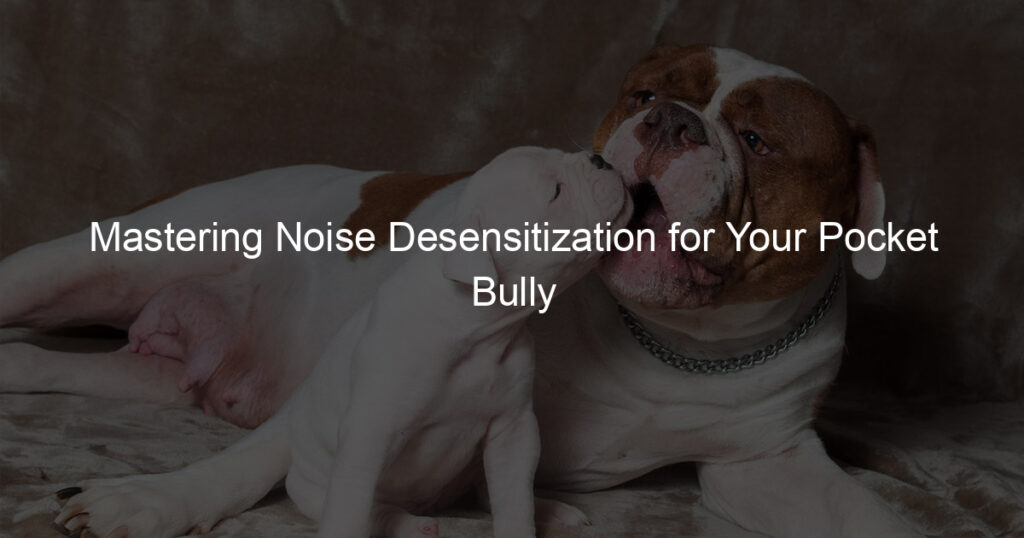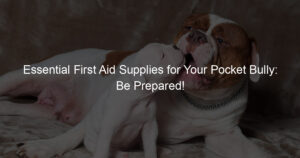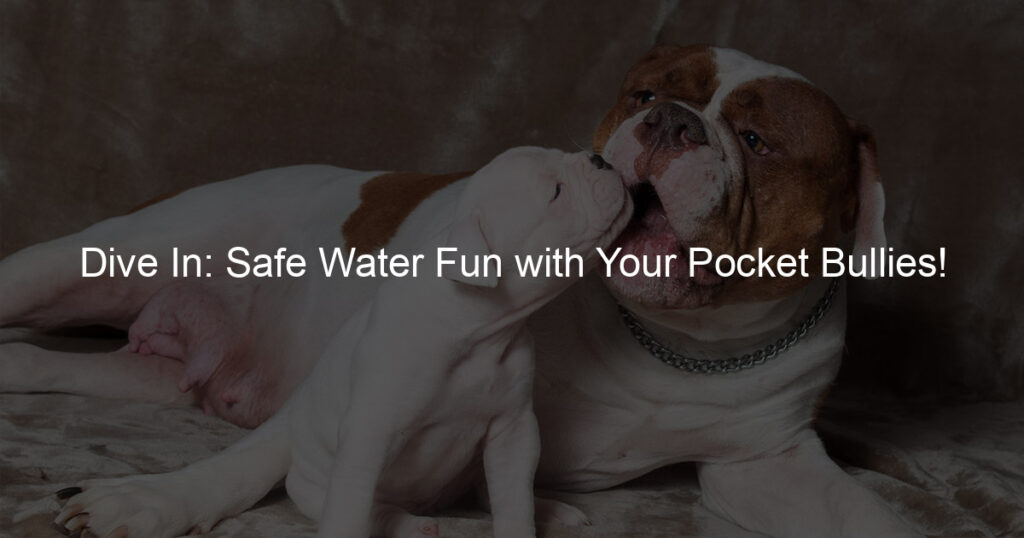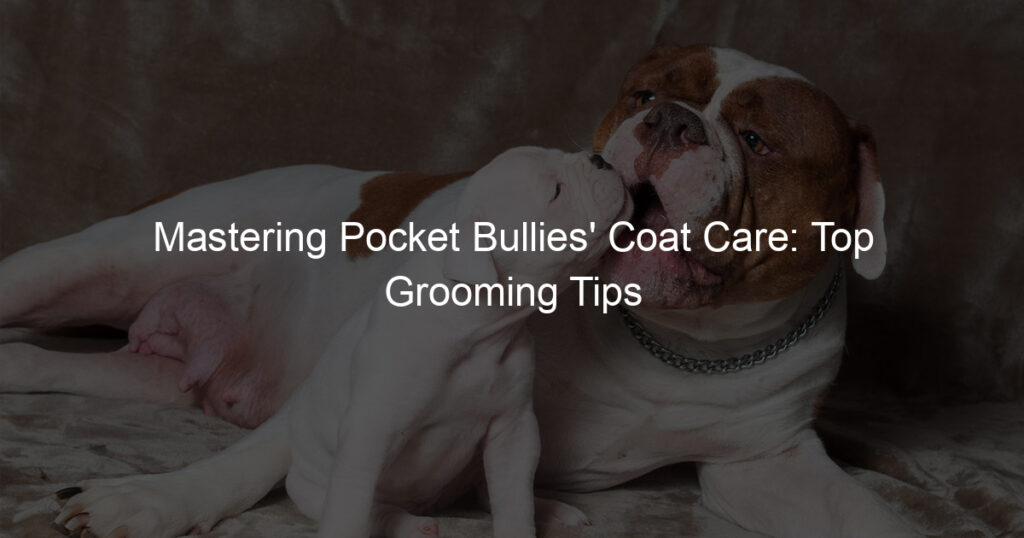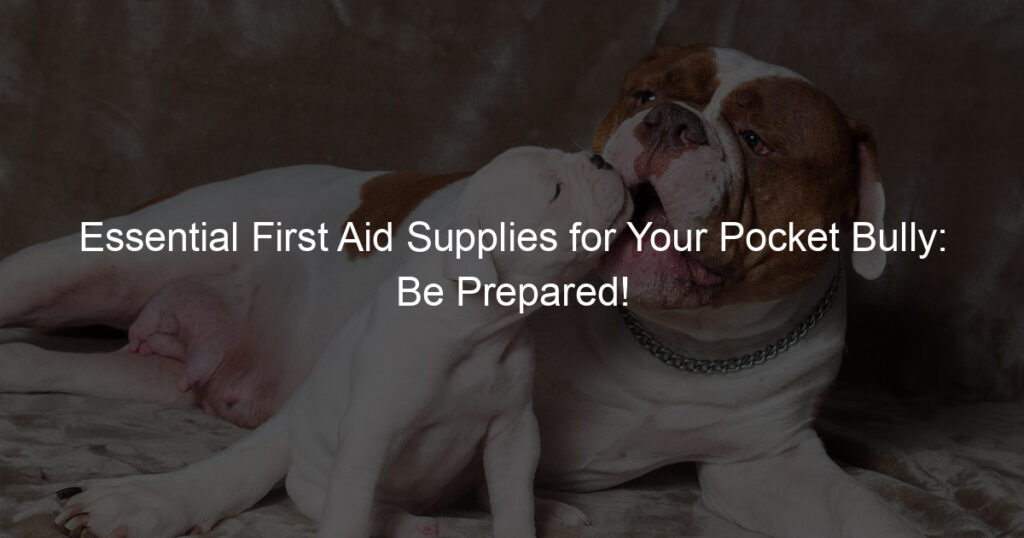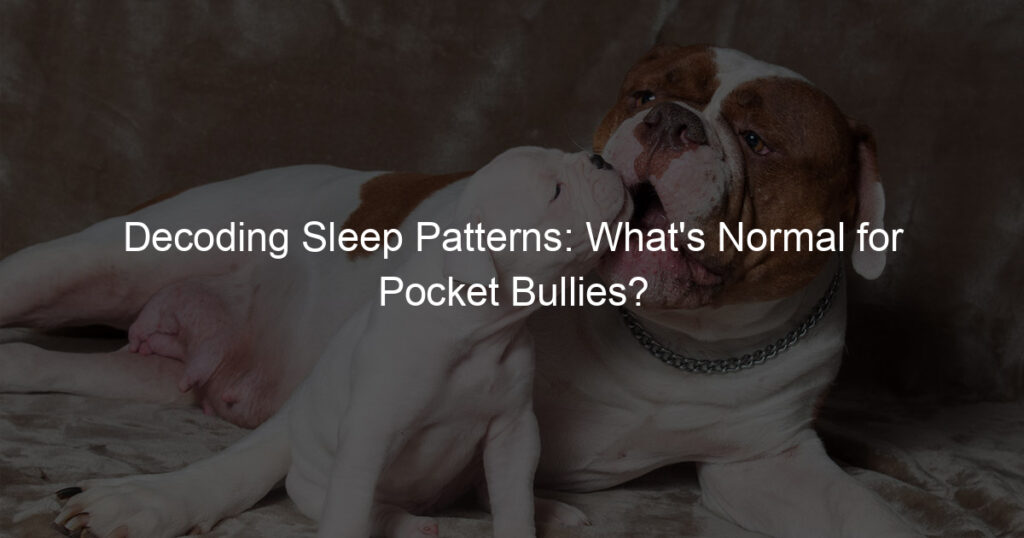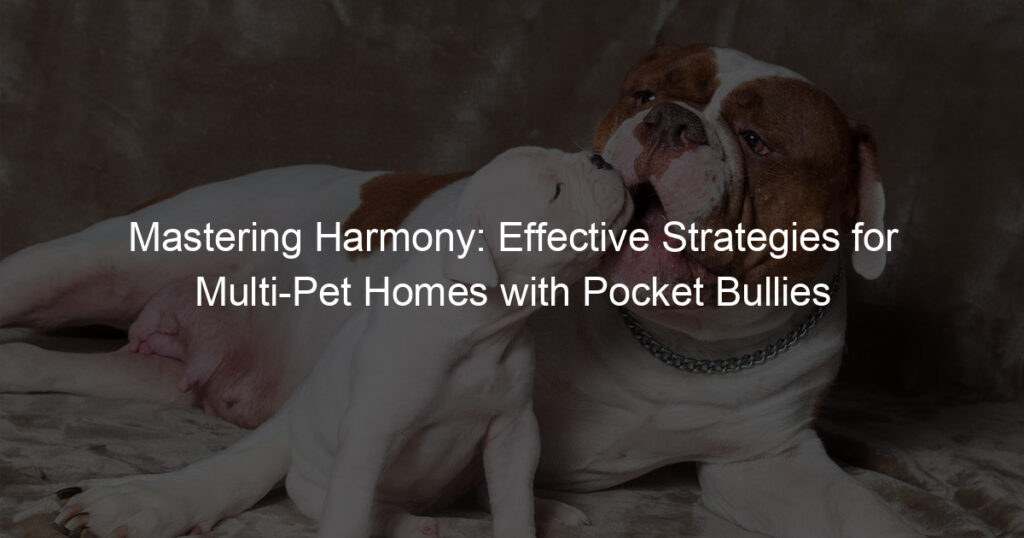
Introduction to Noise Desensitization for Pocket Bullies
When it comes to raising a healthy and well-adjusted Pocket Bully, one aspect that often gets overlooked is noise desensitization. This process is crucial for the overall wellbeing of your pet, and in this article, we will delve into what it entails and why it is so important.
- Understanding the concept of noise desensitization
- Why noise desensitization is important for Pocket Bullies
Noise desensitization, also known as sound conditioning, is a method used to reduce a dog’s fear or anxiety associated with loud or sudden noises. This is achieved by gradually exposing the dog to the noise in a controlled manner, starting at a low volume and gradually increasing it over time. The goal is to help the dog become accustomed to the noise, reducing their fear and anxiety.
Pocket Bullies, like many other breeds, can be particularly sensitive to loud or sudden noises. This can lead to a range of issues, from mild discomfort to severe anxiety and fear. Noise desensitization is a proactive approach to help your Pocket Bully cope with these sounds, improving their quality of life and reducing potential stress.
Throughout this article, we will further explore noise fear in Pocket Bullies, provide training tips for noise desensitization, and share successful case studies. By the end, you’ll have a comprehensive understanding of how to manage noise sensitivity in your Pocket Bully.
Understanding Noise Fear in Pocket Bullies
Noise fear is a common issue in many dogs, including Pocket Bullies. It’s crucial to understand this fear to help your pet cope better. Let’s delve into how you can identify noise fear in your Pocket Bully and what triggers it.
Identifying Noise Fear in Your Pocket Bully
Identifying noise fear in your Pocket Bully is the first step towards helping them overcome it. Here are some signs to look out for:
- Signs of noise fear in Pocket Bullies
- Common triggers of noise fear in dogs
Pocket Bullies, like other dogs, may show various signs of noise fear. These include excessive barking, trembling, hiding, or trying to escape. They may also show signs of anxiety like panting, drooling, or pacing. It’s important to note that not all dogs will show the same signs, and some may even show subtle signs that are easy to miss.
Various noises can trigger fear in dogs. Common triggers include thunderstorms, fireworks, loud music, construction noises, and even the sound of vacuum cleaners. It’s important to identify these triggers so you can help your Pocket Bully cope better.
Understanding your Pocket Bully’s fear of noise is crucial in helping them overcome it. By identifying the signs and triggers, you can take the necessary steps to help your pet feel safer and more comfortable in their environment.
Effects of Noise Fear on Pocket Bullies
Noise fear can have a significant impact on Pocket Bullies, leading to behavioral changes and long-term effects if left untreated. Let’s delve into these aspects in more detail.
- Behavioral Changes Due to Noise Fear
- Long-term Effects of Untreated Noise Fear
Noise fear can lead to noticeable behavioral changes in Pocket Bullies. They may start to show signs of anxiety, such as excessive barking, shaking, or hiding, when exposed to loud noises. Some dogs may even try to escape from the noise, which can lead to dangerous situations.
For example, consider a case study of a Pocket Bully named Max. Max was a cheerful and playful dog. However, his behavior changed drastically when he was exposed to loud noises like thunderstorms or fireworks. He would start shaking, hide under the bed, and refuse to come out until the noise had stopped. This change in behavior was a clear sign of noise fear.
If noise fear is not addressed, it can lead to long-term effects on a Pocket Bully’s health and well-being. Chronic stress from noise fear can weaken the immune system, making the dog more susceptible to illnesses. It can also lead to behavioral problems like aggression or separation anxiety.
Take the example of Bella, another Pocket Bully. Bella’s noise fear was not addressed in her early years. Over time, she developed a severe case of separation anxiety. She would become extremely anxious and destructive whenever she was left alone at home. This was a long-term effect of her untreated noise fear.
In conclusion, it’s crucial to address noise fear in Pocket Bullies at the earliest. Ignoring this issue can lead to behavioral changes and long-term effects that can negatively impact the dog’s quality of life.
Training Pocket Bullies for Noise Desensitization
Training your Pocket Bullies for noise desensitization is a crucial step in helping them overcome their fear of loud sounds. This process involves careful preparation and a systematic approach to gradually expose your dog to various noises. Let’s delve into the preparation phase.
Preparation for Noise Desensitization Training
Before you start the noise desensitization training, it’s important to ensure that your dog is in a safe and comfortable environment and that you choose the right time for training. Here’s how you can do it:
- Creating a safe and comfortable environment: Your dog’s comfort is paramount during this process. Choose a quiet room where your dog feels safe. Remove any items that might startle your dog, like sudden noise-making toys. Make sure the room is well-lit and has comfortable bedding for your dog. The goal is to make your dog feel secure and relaxed.
- Choosing the right time for training: The best time for noise desensitization training is when your dog is calm and relaxed. Avoid training immediately after meals or when your dog is tired. Early morning or late evening, when your dog is naturally more relaxed, could be ideal. Remember, the goal is not to stress your dog but to help them associate noise with positive experiences.
Preparing well for noise desensitization training can make the process smoother and more effective. In the next section, we will discuss the steps involved in noise desensitization training for your Pocket Bullies.
Steps in Noise Desensitization Training
Training your Pocket Bully to handle noise can be a challenging task. However, with patience and the right approach, you can help your pet overcome their fear. Here are the steps to follow in noise desensitization training:
- Start with low-level noises
- Gradually increase the noise level
- Reinforce positive behavior
Begin the training with noises that are low in volume. This could be the sound of a ticking clock or a softly humming fan. The goal is to expose your Pocket Bully to sounds that are not threatening or scary. This step is crucial as it forms the foundation for the rest of the training.
Once your pet is comfortable with the low-level noises, you can slowly start to increase the volume. This should be done gradually over a period of time and not all at once. The idea is to let your Pocket Bully get used to the increased noise level without causing them any distress.
Whenever your Pocket Bully reacts positively to the noise, be sure to reward them. This could be in the form of a treat, a pat, or words of praise. The goal is to reinforce the idea that behaving calmly in the face of noise is a good thing. This step is crucial in ensuring the success of the training.
Remember, the key to successful noise desensitization training is patience and consistency. It may take some time, but with the right approach, your Pocket Bully can learn to handle noise without fear.
Reducing Noise Sensitivity in Dogs: Techniques and Tips
Helping your dog overcome noise sensitivity can be a challenging task. However, with the right techniques and a little patience, it is possible to reduce your dog’s fear of loud noises. Here are some methods that can help.
Techniques for Reducing Noise Sensitivity
There are several techniques that can be used to help reduce noise sensitivity in dogs. Let’s explore a couple of them:
- Use of Noise Desensitization CDs: Noise desensitization CDs are a great tool to help your dog get used to different types of sounds. These CDs contain a variety of noises such as thunder, fireworks, and traffic sounds. Start by playing the CD at a low volume and gradually increase it over time. This slow exposure can help your dog become more comfortable with these sounds.
- Therapeutic Techniques for Noise Fear: There are several therapeutic techniques that can help reduce your dog’s fear of noise. One such technique is counter-conditioning. This involves associating the scary noise with something your dog loves, like a favorite toy or treat. Over time, your dog will start associating the noise with positive experiences instead of fear.
Remember, every dog is different and what works for one may not work for another. It’s important to be patient and consistent with these techniques. If your dog’s noise sensitivity continues to be a problem, it may be a good idea to consult with a professional.
Tips for Successful Noise Desensitization
When it comes to reducing noise sensitivity in your Pocket Bully, there are a few key tips that can make the process more successful. Here are some guidelines to follow:
- Be patient and consistent
- Never force your Pocket Bully
- Consult a professional if needed
Desensitizing your Pocket Bully to noise is not a quick process. It requires patience and consistency. You’ll need to expose your dog to the noise gradually, starting at a low volume and slowly increasing it over time. Consistency is key – try to practice the desensitization exercises every day.
It’s important to never force your Pocket Bully into a situation where they feel uncomfortable. If your dog is showing signs of distress, it’s best to take a break and try again later. Forcing your dog to endure a noise that scares them can actually make their fear worse.
If you’re finding it difficult to desensitize your Pocket Bully to noise, or if your dog’s fear seems to be getting worse, it’s a good idea to consult a professional. A professional dog trainer or a veterinary behaviorist can provide you with expert advice and guidance.
Remember, every dog is different and what works for one might not work for another. It’s all about finding what works best for your Pocket Bully and sticking with it. With patience, consistency, and the right approach, you can help your dog become less fearful of noise.
Case Studies: Successful Noise Desensitization in Pocket Bullies
Let’s take a closer look at two case studies that demonstrate the effectiveness of noise desensitization techniques in Pocket Bullies.
- Case Study 1: Overcoming Thunderstorm Fear
Meet Max, a two-year-old Pocket Bully who had a severe fear of thunderstorms. His owners noticed that during storms, Max would hide, tremble, and even refuse to eat. They decided to try noise desensitization techniques to help Max overcome his fear.
They began by playing recordings of thunderstorm sounds at a low volume, gradually increasing the volume over time. They also paired the sounds with positive experiences, like playtime and treats. After several weeks of consistent training, Max’s fear of thunderstorms significantly reduced. He no longer hid or trembled during storms, and his appetite remained normal.
- Case Study 2: Coping with Fireworks Noise
Next, we have Bella, a three-year-old Pocket Bully who was terrified of fireworks noise. Every New Year’s Eve or Fourth of July, Bella would become extremely anxious and distressed due to the loud noises.
Bella’s owners decided to use noise desensitization techniques to help her cope. They started by playing fireworks sounds at a low volume, gradually increasing it over time. They also made sure to create a safe and comfortable space for Bella to retreat to during the noise exposure sessions.
Over time, Bella became less reactive to the sounds of fireworks. While she still showed some signs of discomfort, her distress levels were significantly lower than before. Bella’s case demonstrates that while complete desensitization may not always be achievable, significant improvements can be made.
In conclusion, these case studies show that with patience, consistency, and the right techniques, noise desensitization can be successful in helping Pocket Bullies overcome their noise fears.
Conclusion: Managing Noise Sensitivity in Pocket Bullies
In this article, we have explored the topic of noise sensitivity in Pocket Bullies, a common issue that many dog owners face. We have delved into understanding the fear of noise in these dogs and discussed various techniques for noise desensitization. Let’s take a moment to recap and underline the importance of continued training and patience in managing this condition.
- Recap of noise desensitization techniques
- Importance of continued training and patience
We have discussed a variety of techniques to help your Pocket Bullies overcome their fear of noise. These include gradual exposure to noise, using positive reinforcement, and creating a safe space for your dog during noisy events. Remember, the key is to start with low levels of noise and gradually increase the volume as your dog becomes more comfortable.
Training a dog to overcome noise sensitivity is not a one-time task. It requires consistent effort and a lot of patience. It’s important to remember that each dog is unique and will progress at their own pace. Don’t get discouraged if progress seems slow. Consistency and patience are key in this journey.
Managing noise sensitivity in Pocket Bullies can be a challenging task, but with the right approach and techniques, it is certainly achievable. Remember, the goal is not to eliminate the fear completely, but to help your dog manage it better and lead a happier, less stressful life.
As we conclude, let’s remember the words of famous dog trainer, Ian Dunbar, “Training is not a luxury, but a key component to good animal care”. So, let’s commit to providing the best care for our Pocket Bullies by helping them manage their noise sensitivity.
